Bristol St Philip’s Marsh
The inside story of an HST depot
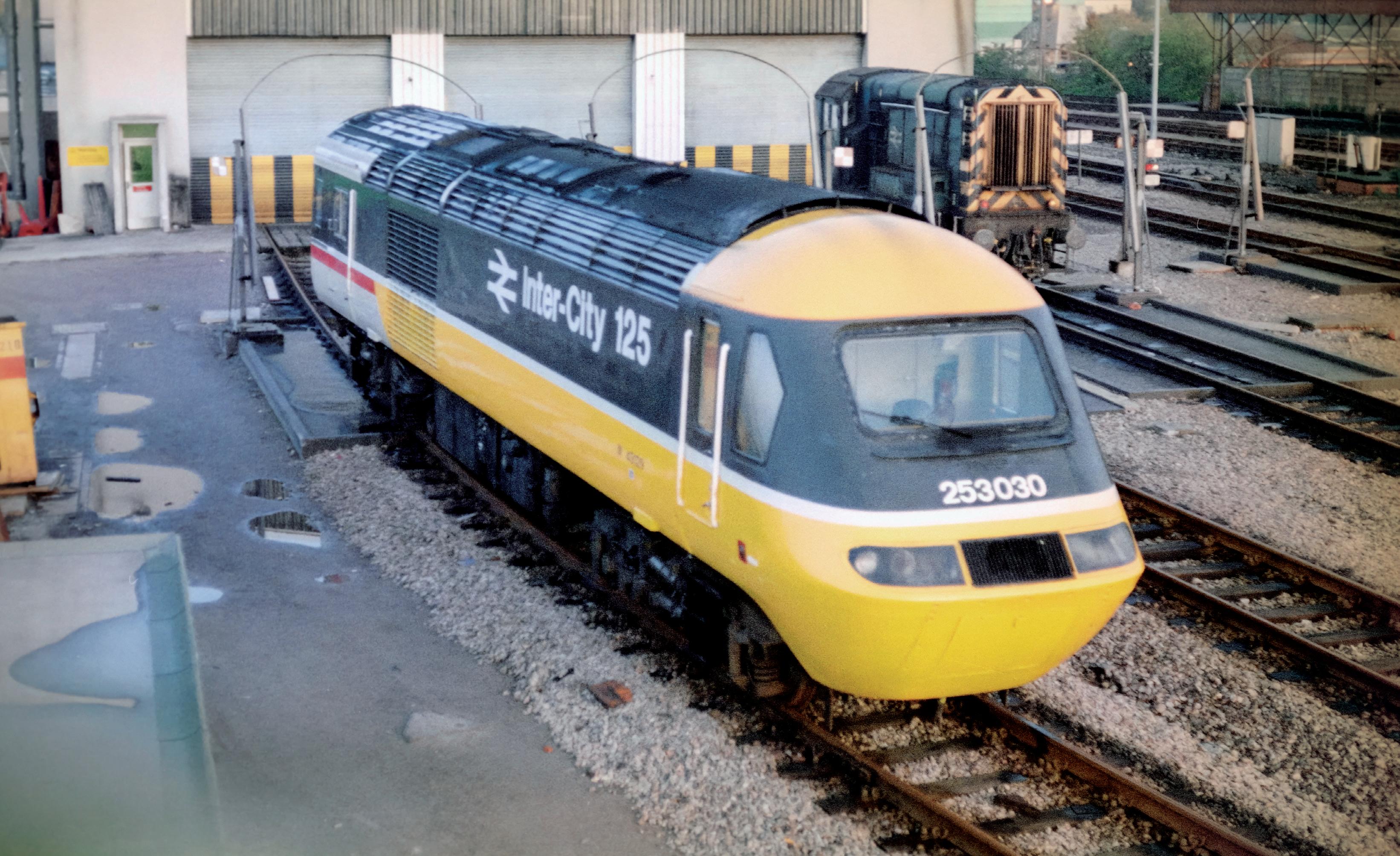
Stephen E Jones
Introduction
The depot at St Philip’s Marsh was constructed between 1975 and 1976 on a site that had previously been the old GWR cattle pens. The yard at Victoria sidings was originally a facility used for steel traffic and latterly became a storage point for condemned rolling stock and traction. This major investment in the railways in Bristol was part of a greater plan, which was something of an experiment as well. The depot was completed in the early autumn of 1976 and the first trains to be serviced arrived soon afterwards. I had watched as this all took place as my own place of work was across the tracks at Marsh Junction Shed, which at that time was part of the Bristol AME’s Carriage and Wagon Department.
Staffing of the new depot in the beginning was on a temporary basis with men from Bath Road and from the C & W taking a rotational system. This continued into the following year, and as more HST trains were built and delivered, it became necessary to firm up these arrangements and allocate a permanent set of staff and give the depot its own identity. I was there from the outset and when the summer timetable was launched, HST services became fully integrated in the timetable.
Key:
BE - Bristol East Junction
BTM – Bristol Temple Meads (Station)
BWJ – Bristol West Junction
DDJ – Dr. Day’s Junction
MJ – Marsh Junction Depot
NSJ – North Somerset Junction
SPM - St Philip’s Marsh (Main Shed)
Additional historical information:
The area around the depot is known as St Philip’s Marsh and was known locally as ‘the island’ because it is surrounded on all sides by a river and a canal.
Many years earlier, it had been the location of a colliery and a small enclave of dwellings for the miners.
It was challenging stuff and exciting to be involved in the world’s first regular high speed train service operated by diesel traction at 125 mph.
During 1977 and 1978 a considerable effort was made to make the project a success with a great many teething troubles having to be dealt with whilst at the same time still running an intensive service.
This book is to give an insight into developments not only at St Philip’s Marsh, but also Bath Road. Neither of these depots has received much publicity over the years so here I can at least fill the gap and show a few images that I captured along my journey. I have also taken the liberty of including some of the images I took whilst out-stationed on contract for the BRB, to Foster Yeoman, at their facility at Merehead.
The photographic story begins in 1979. It ends in 2006 when my involvement with both the depot and the industry ended.
Steve Jones, Weston-super-Mare
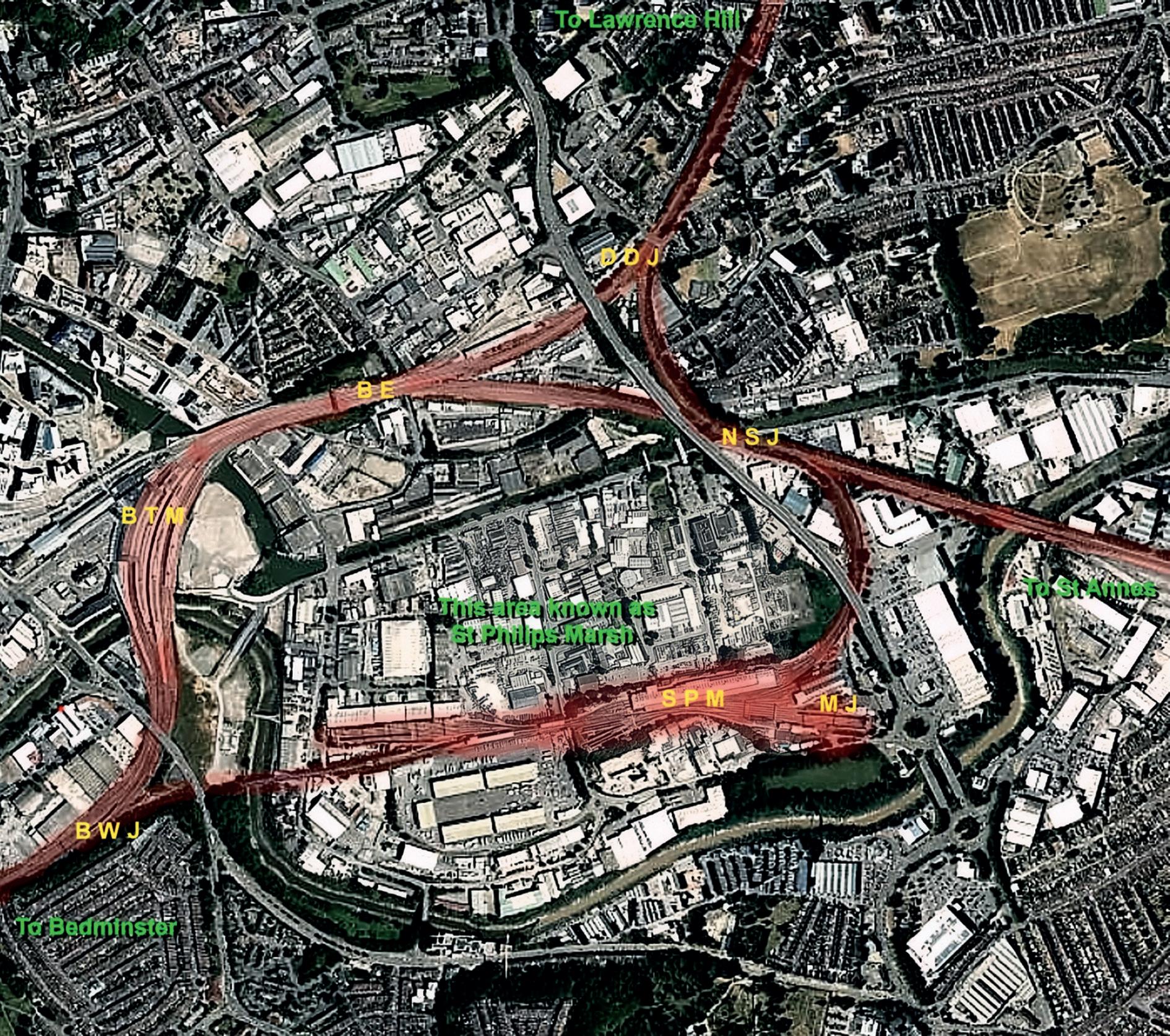

An interesting year, which saw the arrival of the last new vehicles built for HST.
A Rail Grinder was shipped here for trials from Switzerland. So they were now famous for something other than the cuckoo clock and chocolate!
The last surviving original blood and custard coach was discovered, and we had a few unplanned events as well. DMU maintenance was experimented with at SPM while alteration work went on at Bath Road.


The GEC traction motor problems became an issue and power units continued to have problems with cylinder heads, coolant leaks and overheating and the occasional big end failure or “sticking a leg out of bed” as it was termed.
Cab air conditioners were a constant source of amusement, or rather annoyance, and trailer car air conditioners had problems with vent fan motor failures.
Overall, things were going well then! One thing was for sure, we had plenty to do.
Left: 1980 was the year the last newly designed HST production vehicles began being delivered. For many years Guards had been complaining about the unpleasant conditions in the compartments on the van end of the power cars. Lacking air conditioning and suffering high levels of noise made the environment, in their words, totally unacceptable. Strike action was contemplated but after due consideration, plus the opportunity to extend the length of the sets, a new build series was authorised. These vehicles were built alongside the other trailers still in production. Newly delivered W44001 TGS stands on the west end of ‘A’ Road on Shore and depot air supply undergoing acceptance examination. March 1980.
Bottom Left: The new Guards’ office was regarded as suitable for the discharging of their duties. The two phone handsets are for communicating with the driver (top) and making announcements over the trains’ public address system (lower).
Bottom Right and Opposite: The Swiss Speno rail grinder set had been working on the WR and was stabled at Marsh Junction for a few days. This was very much an experimental operation, which has since become a widely used alternative to rail replacement. March 1980.
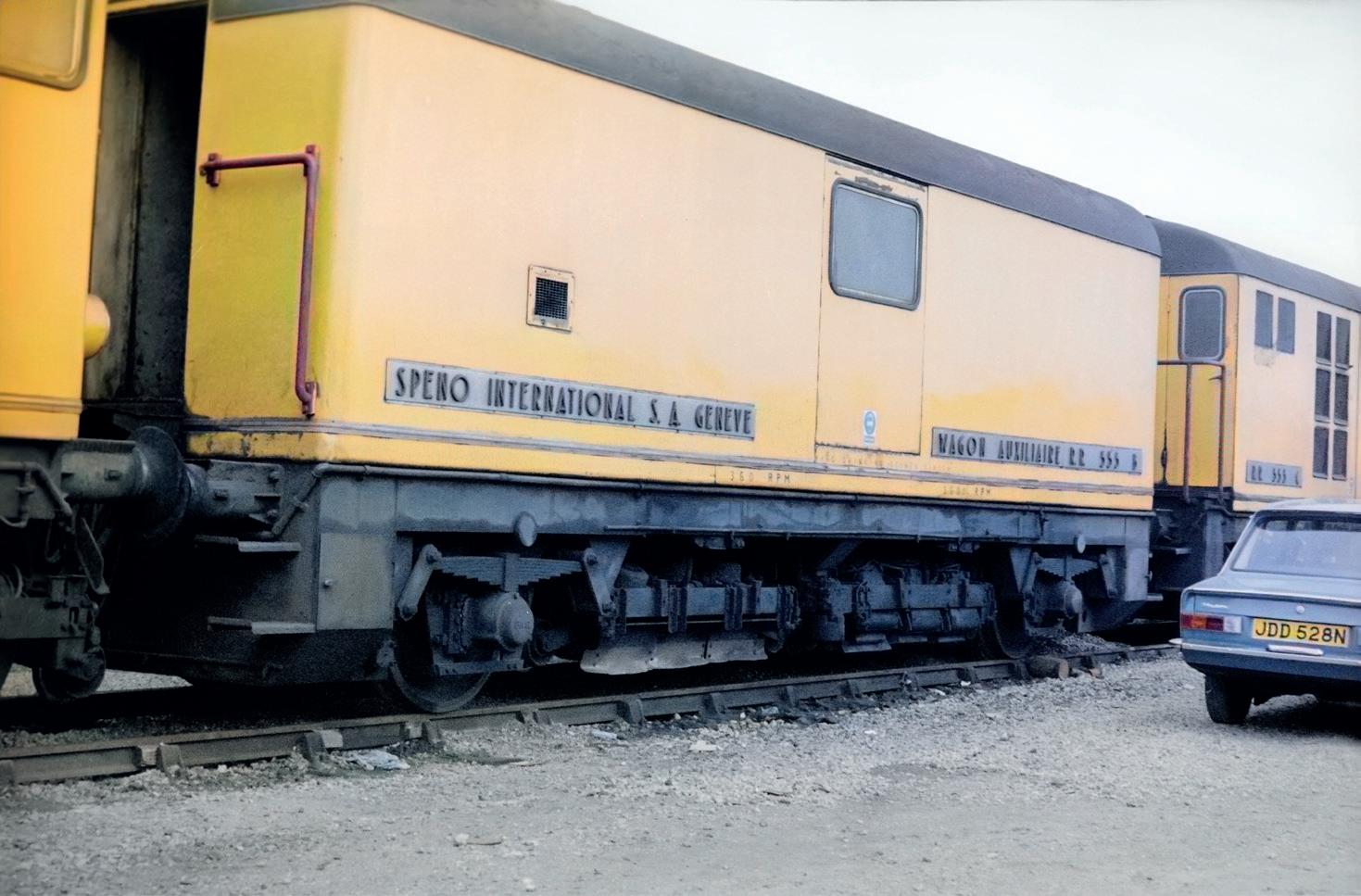
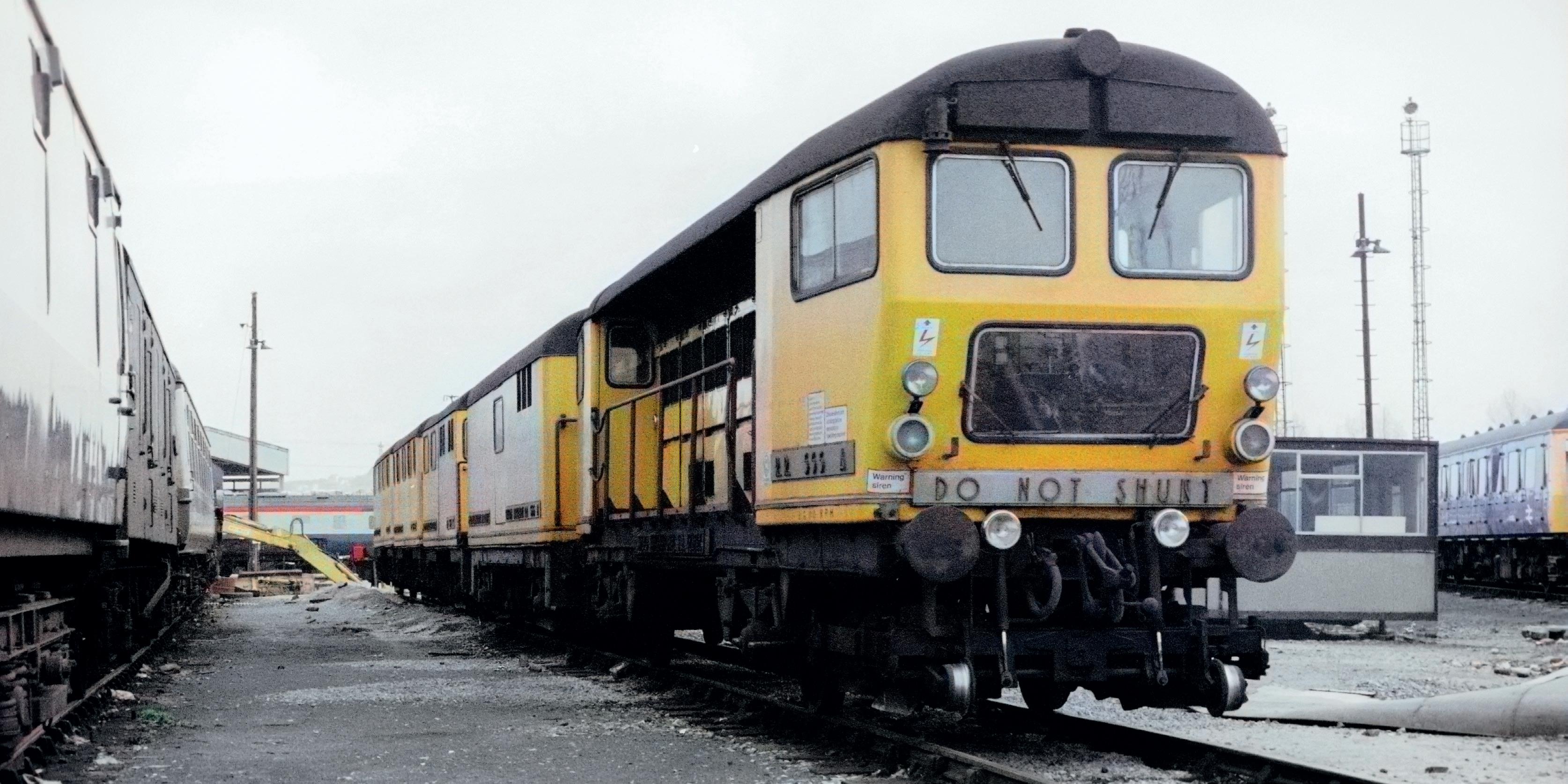
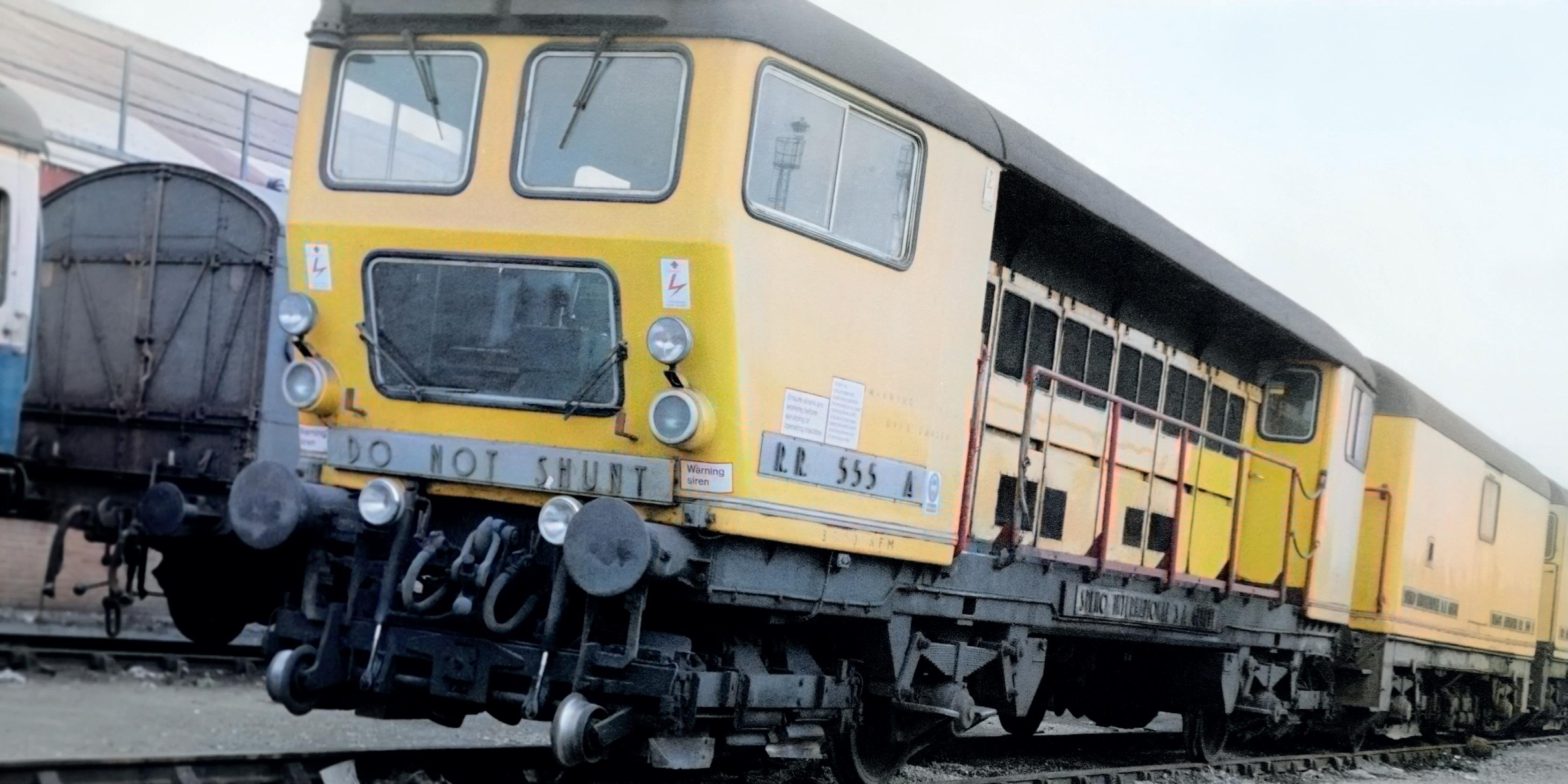
This was the year when the 150th anniversary of the forming of the Great Western Railway was celebrated. It was also a year when the Executive livery was adopted as standard for InterCity stock. Namings came back into fashion and this was extended to freight locomotives! Railfreight came into being and got its own branding and livery, and more passenger locos became ETH capable.
It was also the year rail privatisation came a small step closer with a private company ordering their own locomotives to operate on the
main line. I will cover this topic in greater detail you may be assured, as it had an impact on me personally.
By the end of the year, the skilled workshop staff were ‘given’ the opportunity to get a higher rate of pay at a cost! This was the bright idea called “Craft Inter-Changeability” which was a plan that the management were very keen on because they could see that eventually they could get rid of staff.

As mentioned in the preamble of this section, the naming of passenger and freight locos became fashionable once again during 1985, and here we have No 47 537 having recently been given the ‘treatment’. The nameplates were interesting in that each side was different. This could be regarded as the Welsh side and the other side the English side as the names were reversed with the English at the top. It would not do to have offended the sensibilities of either nationality. Naming policy appeared to be somewhat haphazard as other locos given ‘county’ names included classes 37 and 56. This machine was captured in the ‘new’ daily shed on road 6 at Bath Road.
Built as D1657, this Brush built Type 4 was ETH converted in the early 1970s and renumbered 47 537 straight from its original. It eventually became a parcels sector loco and lost its name. January 1985.
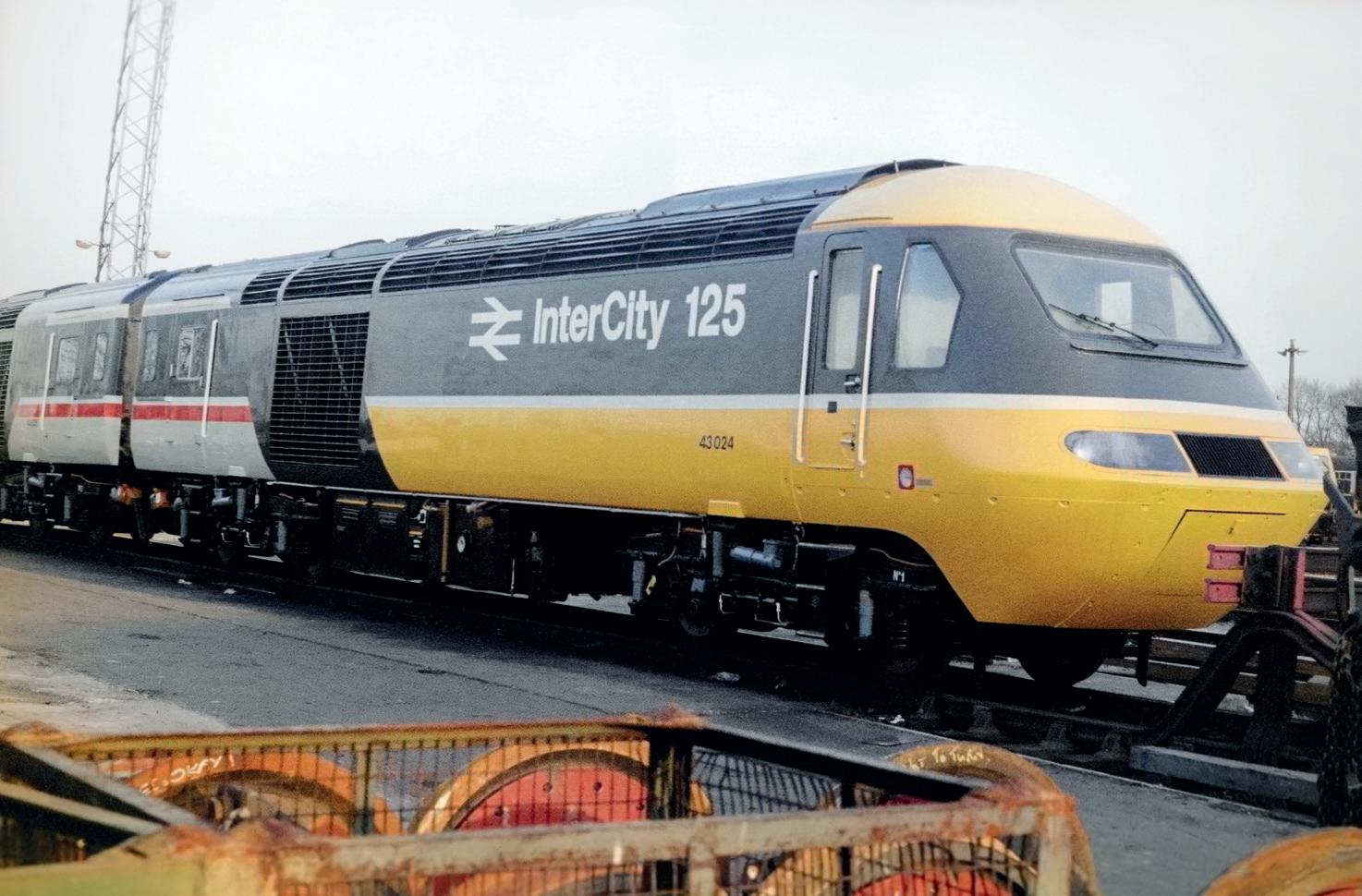


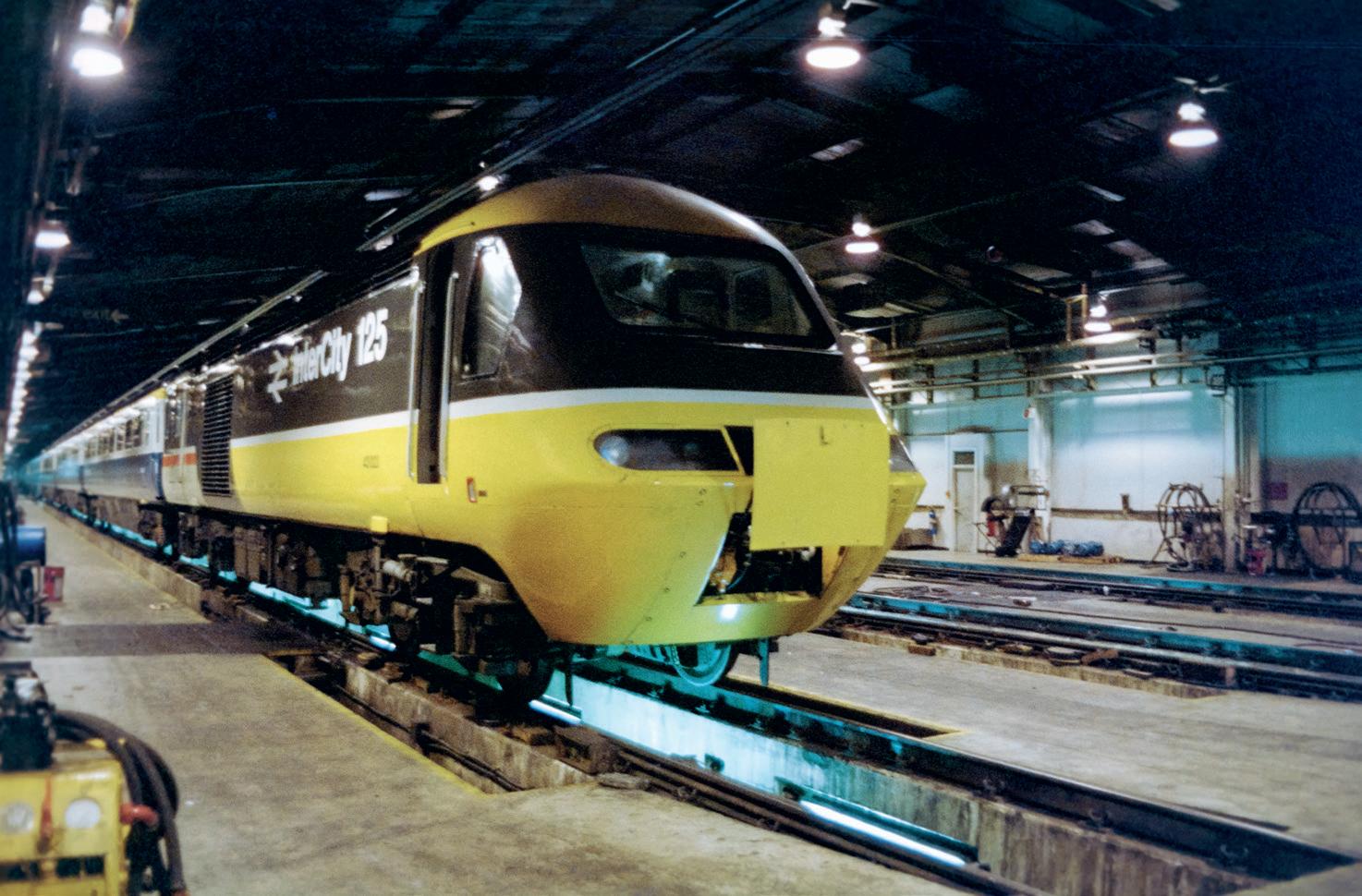
Top Left and Right: Set 253 012’s original power cars turned up ex-works. No 43024 stands back to back with No 43025 in the oil road at SPM resplendent in the finalised and sanctioned livery. For some reason it was found necessary to paint the number of the bogie on the frame. The revised livery produced an angled stripe the same as the old blue livery across the cooler group intake grille in the body side, which must have saved a great deal of time and effort, and it looked better. March 1985.
Bottom Left and Right: New lighting was installed in the shed at SPM, giving everything a warm reddish glow. Two views taken on the same evening in this palace of light. Now in service, 43024 stands on a set of blue/grey trailers waiting for an ‘A’ exam. March 1985
1997
Although the Western had been sold into private hands the previous year, it took some time for a new livery to be sorted out. By the time the New Year got under way, sets and power cars were being repainted
either at Works (Wolverton Train Care) or locally at Marsh Junction and Laira.
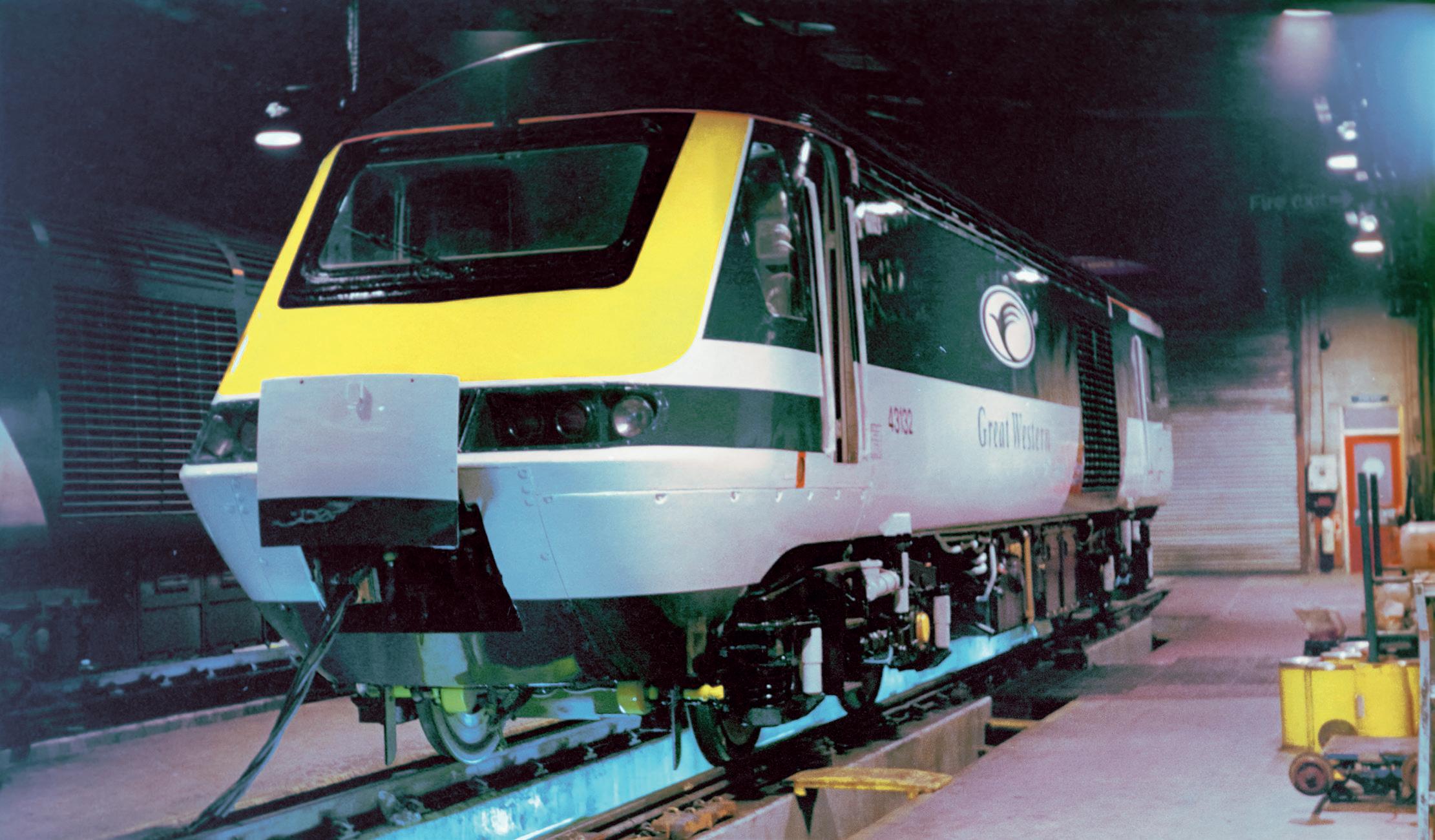
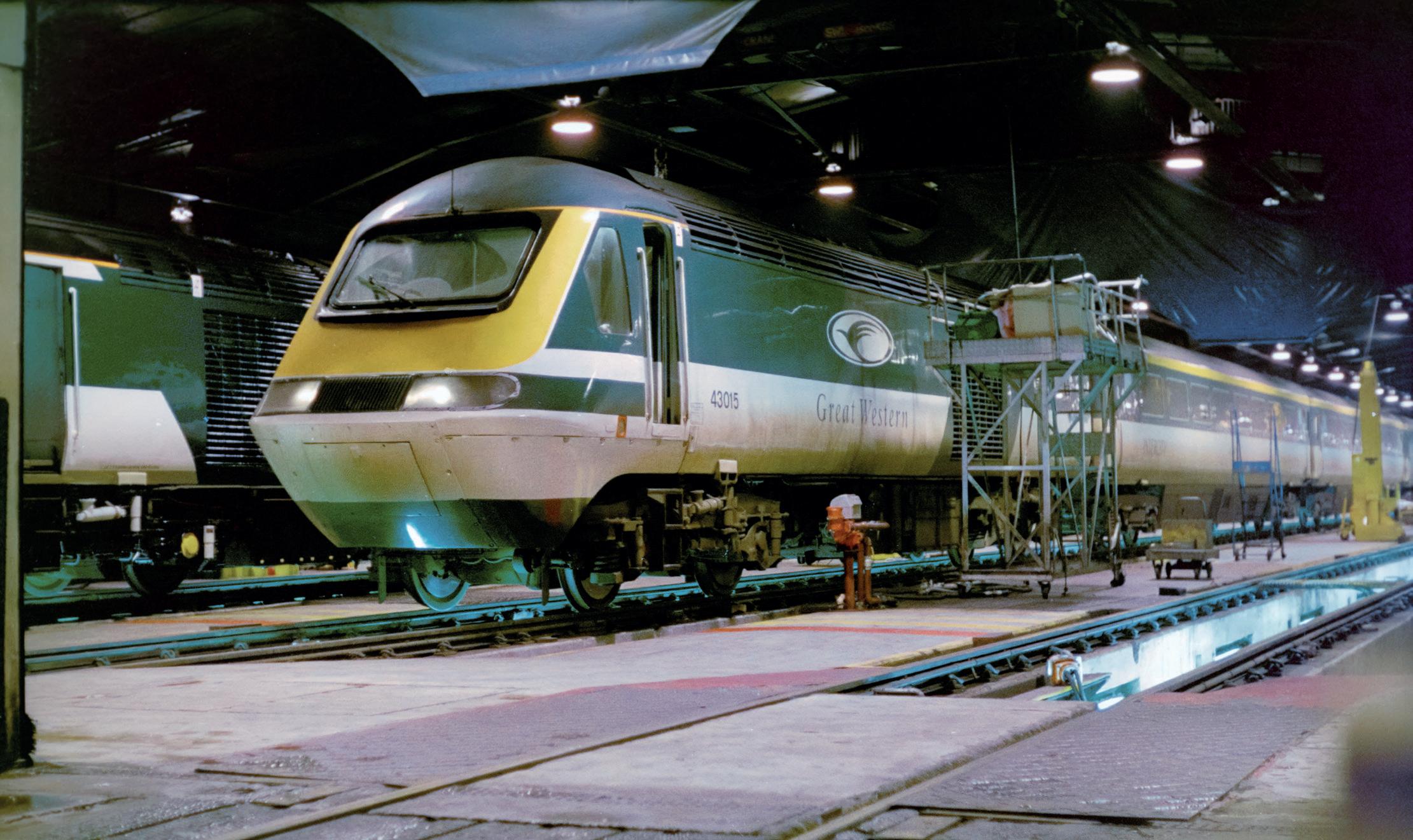
Freshly painted at Marsh Junction, No 43132 is seen here standing on ‘A’ road west SPM on shore supply to enable the batteries to be charged. Prolonged periods of inaction usually resulted in flat batteries. February 1997.
On the next road No 43015 stands on a rake of GWT liveried trailers just arrived from service and showing signs of travel in the form of dirt! Painting trains white has never been a bright idea unless you have excellent cleaning equipment. By now our old Britannia carriage washers were pretty well life expired, despite the best efforts of the Plant department. February 1997.
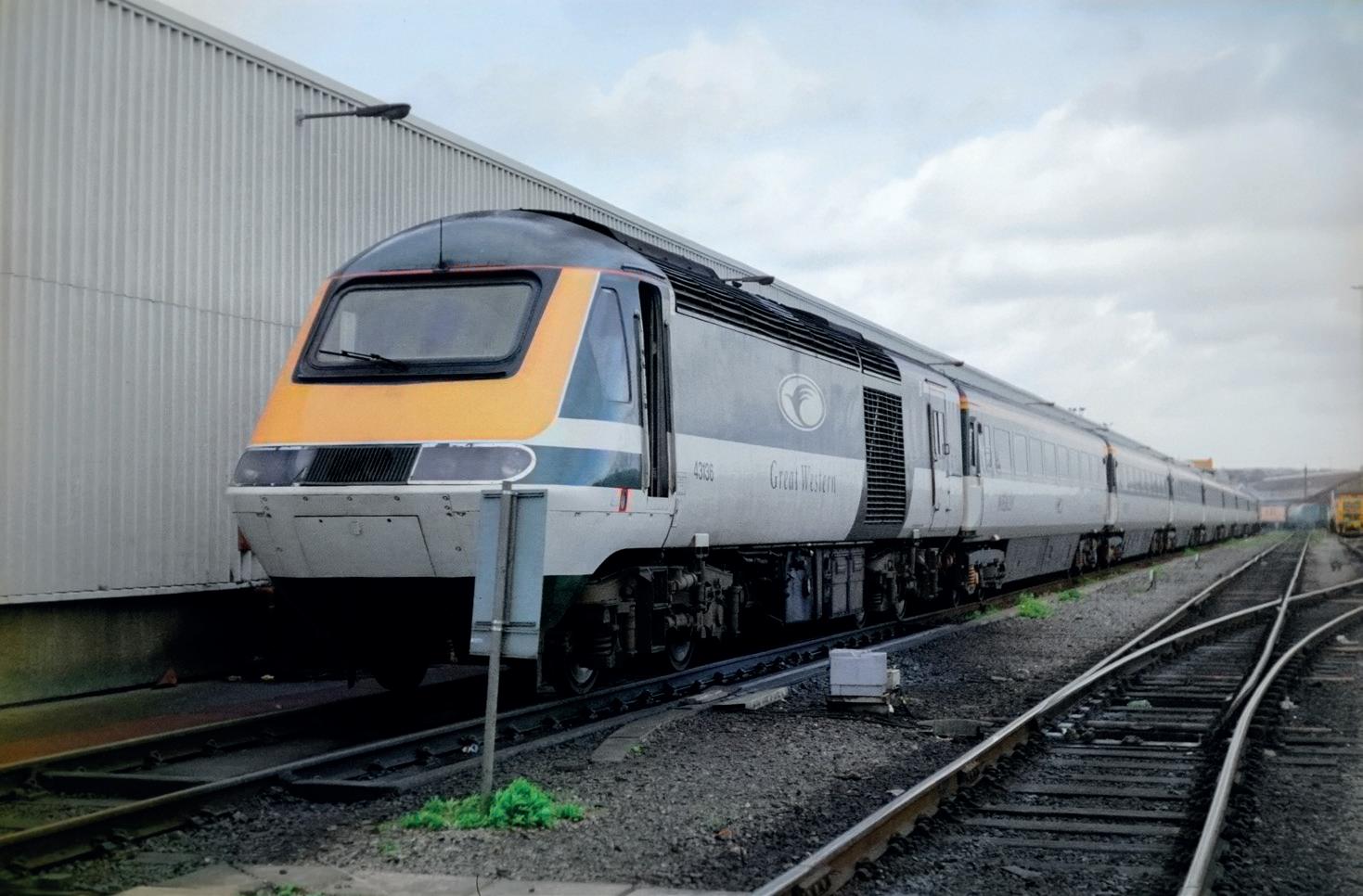
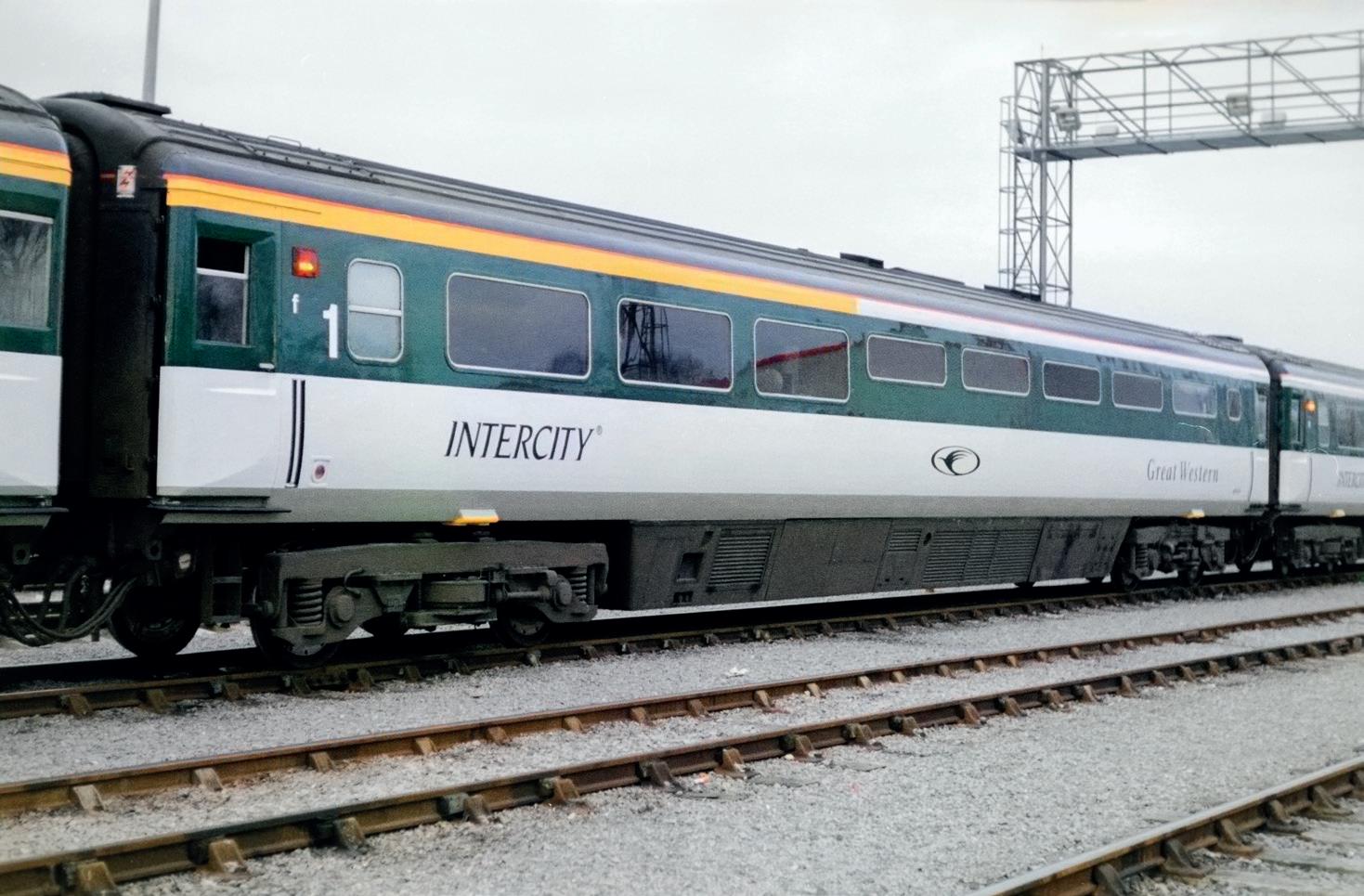
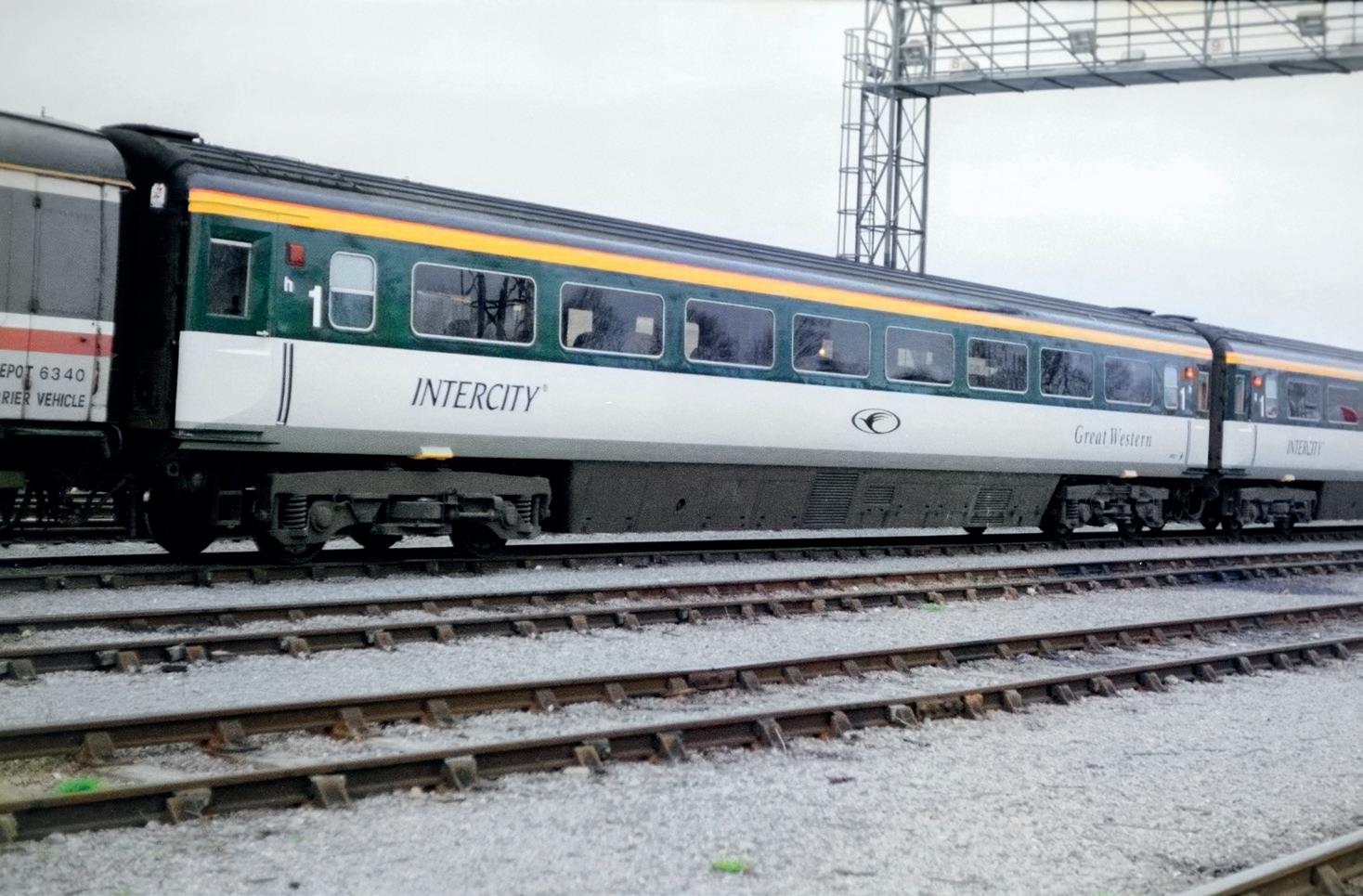
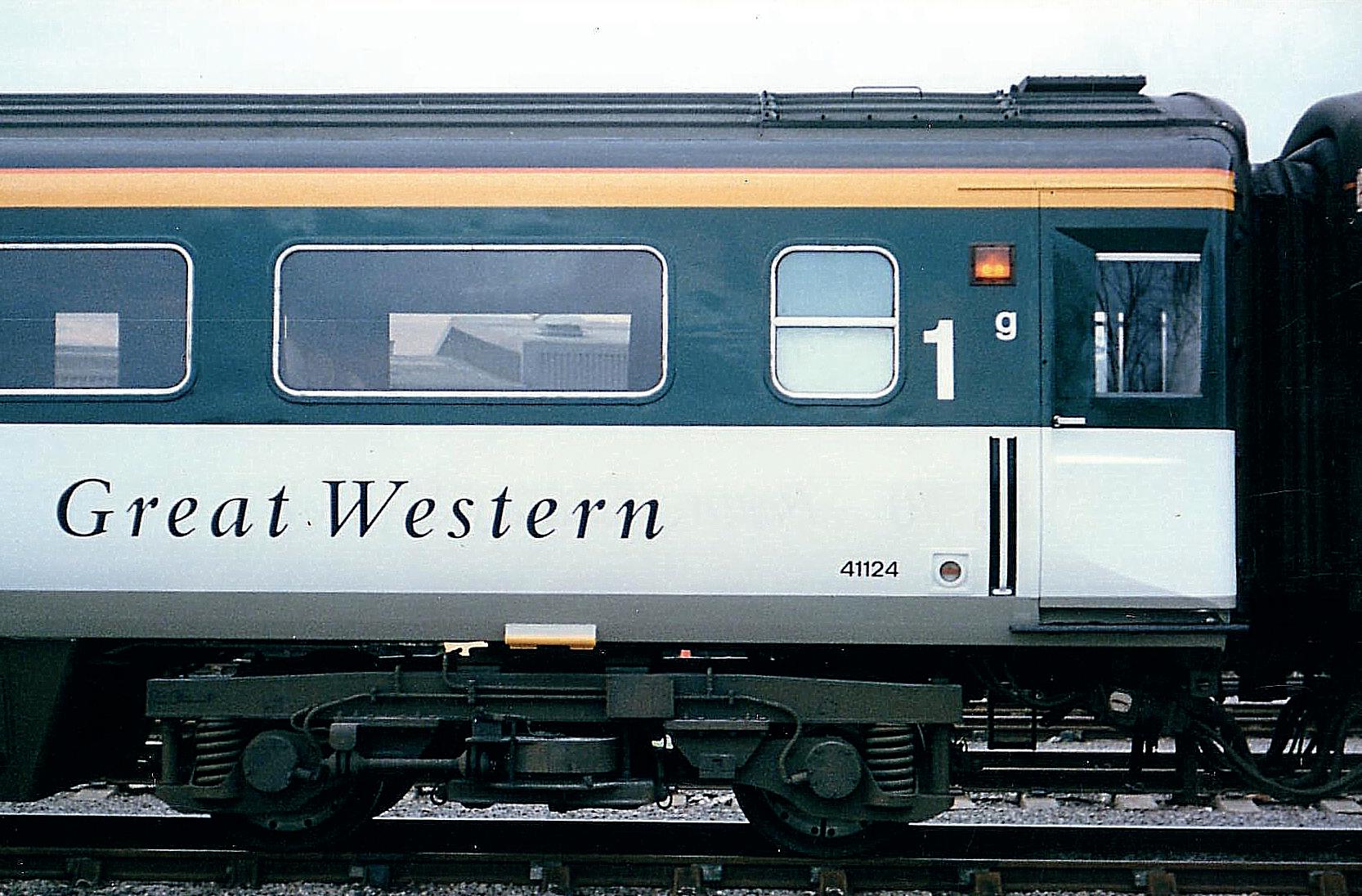
Top Left: No 43 136, with a refurbished set of trailers, stands on ‘D’ road west SPM. The set was on a layover and had come to SPM to ease congestion at Temple Meads. March 1997.
Top Right: No 41132 TF exhibits the early scheme where the INTERCITY logo was carried. The British Railways Board that still existed was unimpressed despite the inclusion of a Copyright mark. The idea was dropped, resulting in only a few sets being so identified, the rest carried the Great Western motif at both ends. This set is on road 10, new sidings, SPM.
Bottom Left: Also seen as part of set 253 033 is No 40327 TRFB ex-works on Road 10 SPM. Only the bodywork was dealt with at works in order to apply the new livery and fit revised internal trim.
Bottom Right: Close up view of markings on this TF, No 41124. This lettering was in the same green as the body colour. It is also larger than that applied on the later revised livery without the INTERCITY markings. March 1997.

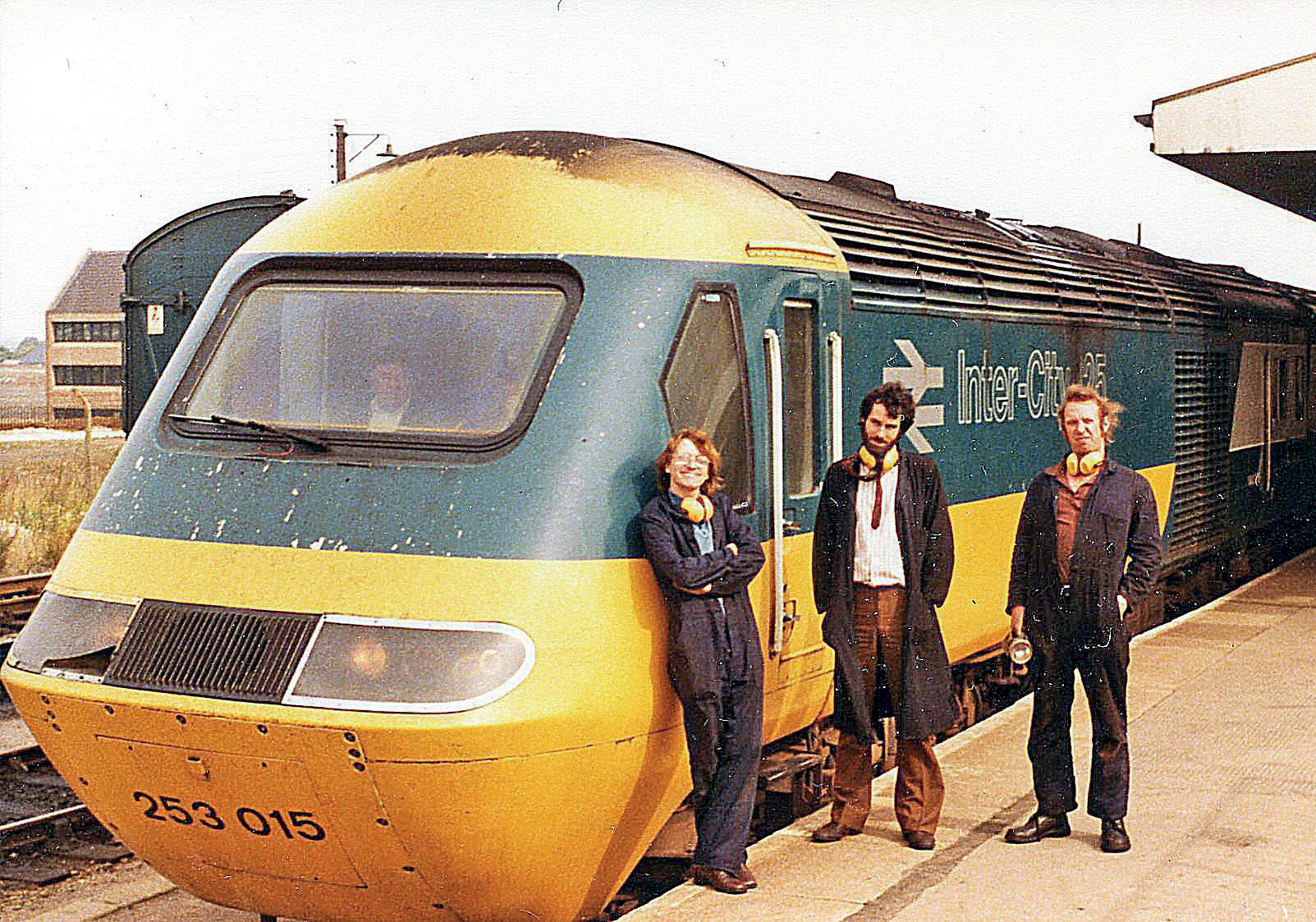
This is a book with a difference. One man’s story of time spent ‘on the inside’ at St Philip’s Marsh HST depot, Bristol from 1979 through to 2001. Stephen Jones was a trade electrician at SPM responsible with others for maintaining the fleet of Western Region HST sets through the good and sometimes not so good times.
Written from the heart by a man ‘who was there’, this is a no holds barred description of how the fleet was operated and maintained, how as time passed corners were cut and later under privatisation how it was a case of ‘reinventing the wheel’ seemingly more than once.
In addition we are able to witness the birth into service of the remarkable Yeoman Class 59 engines, with some remarkable tales and illustrations that are only possible again by a man on the inside.
Although very much a personal record profusely illustrated with the author’s own images, it is also a record of a lifetime of railway service. £ 32.50

